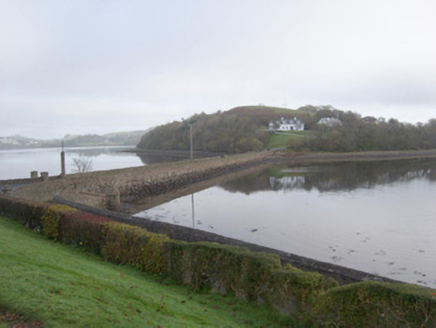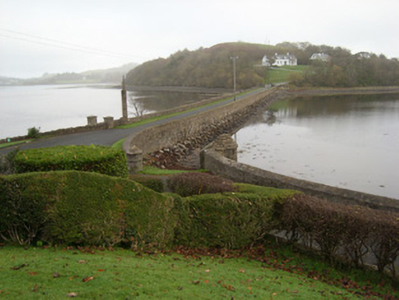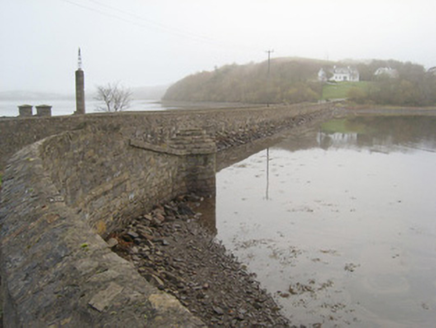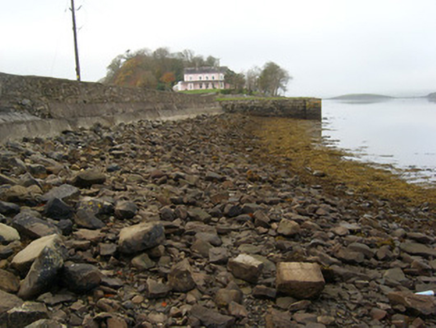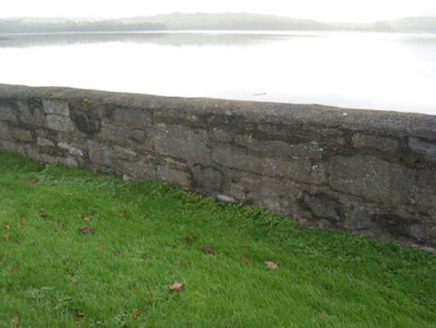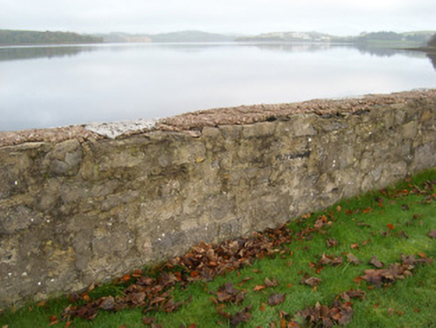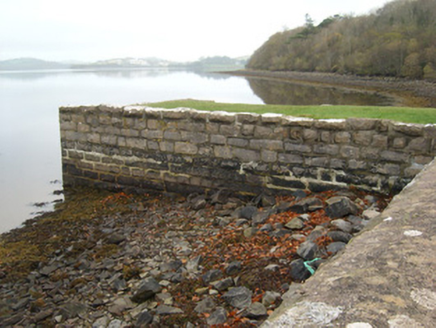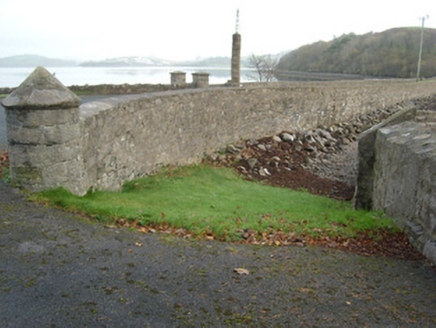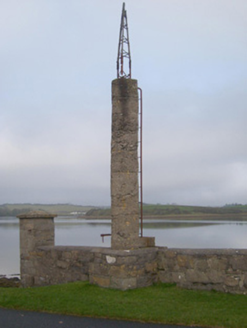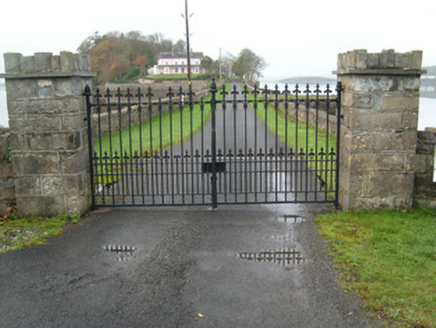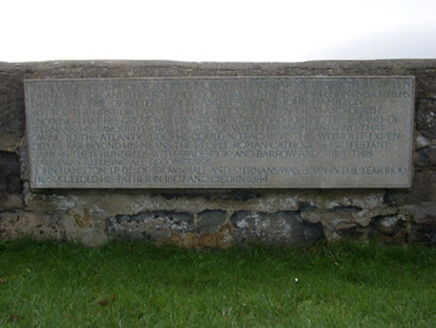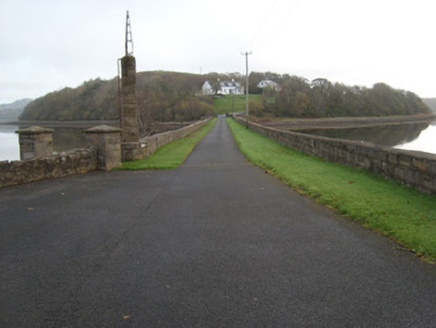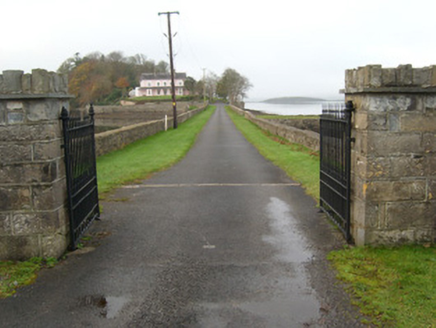Survey Data
Reg No
40909949
Rating
Regional
Categories of Special Interest
Architectural, Historical, Scientific, Technical
Previous Name
St. Ernan's
Original Use
Bridge
In Use As
Bridge
Date
1850 - 1870
Coordinates
191196, 375994
Date Recorded
13/11/2007
Date Updated
--/--/--
Description
Causeway, built c. 1860, linking St. Ernan’s Island and house (see 40909919) to the mainland to the east. Causeway built on rubble stone base/platform. Rubble stone boundary/parapet walls to either side having rendered coping over; commemorative stone plaque to the south boundary wall/parapet. Tarmacadam deck with grass verges. Pier to the centre of the north parapet having squared and coursed rubble stone walls with mildly rock-faced coping over; grass deck. Slipway to the south-west corner having rubble stone piers (on circular-plan with conical and stepped rubble stone coping over. Gateway to the east end comprising a pair of mildly dressed ashlar gate piers (on square-plan) having crenellated coping over, and with a pair of wrought- and cast-iron gates having cast-iron finials over. Mass concrete former electricity pylon/lamp standard with metal ladder and fittings to the north-west corner. Spans part of Donegal Bay between Muckross Strand to the north and Dungally Strand to the south. Located to the south/south-west of Donegal Town.
Appraisal
This robust rubble stone causeway was originally built to link St. Ernan’s Island and house (see 40909919) to the mainland to the west, and is an attractive feature of some picturesque and historic merit along the coastline to the south/south-west of Donegal Town. Its original construction represents a feat of some technical and engineering merit, spanning a considerable distance across tidal mudflats. The functional rubble stone boundary walls survive in good condition, albeit with some modern repair in places, while the gateway to the east end has high-quality ashlar gate piers and attractive cast- and wrought-iron gates that act as a fitting prelude to a site such as St. Ernan’s. This causeway was originally built for the owner of St. Ernan’s House, John Hamilton (1800 – 1884), as a means of thanks by his ‘grateful tenantry’ for his humanitarian and philanthropic deeds during the horrors of the Great Famine (c. 1845 – 1851). A commemorative plaque to the south parapet records: ‘This causeway stands to commemorate the great mutual love between John Hamilton and the people of Donegal, both his own tenants and others. Through a time of bitter famine and pestilence, John Hamilton, not for the first time or the last time had stood between them and death. Knowing that his great wish was to build a road adjoining the island of St. Ernan’s, his favourite resting place, with the mainland, and that owing to the Atlantic tides he could not achieve this without expenditure far beyond his means, the people, both Roman Catholic and Protestant, came in their hundreds with spade, pick and barrow to build this causeway, refusing all recompense. John Hamilton J.P., D.L., of Brown Hall and St. Ernan’s was born in the year 1800. He succeeded his father in 1807 and died in 1884’. The pier to the centre of the north parapet is an interesting feature, built out of good quality squared and coursed masonry, which adds further interest to this site. This feature may have been originally built to aid in the construction of the causeway, acting as a place to land boatloads of stone etc. This interesting site, of some romantic and historical interest, is perhaps a unique addition to the built heritage and social narrative of Donegal, and forms part of an interesting collection of structures associated with St. Ernan’s.
